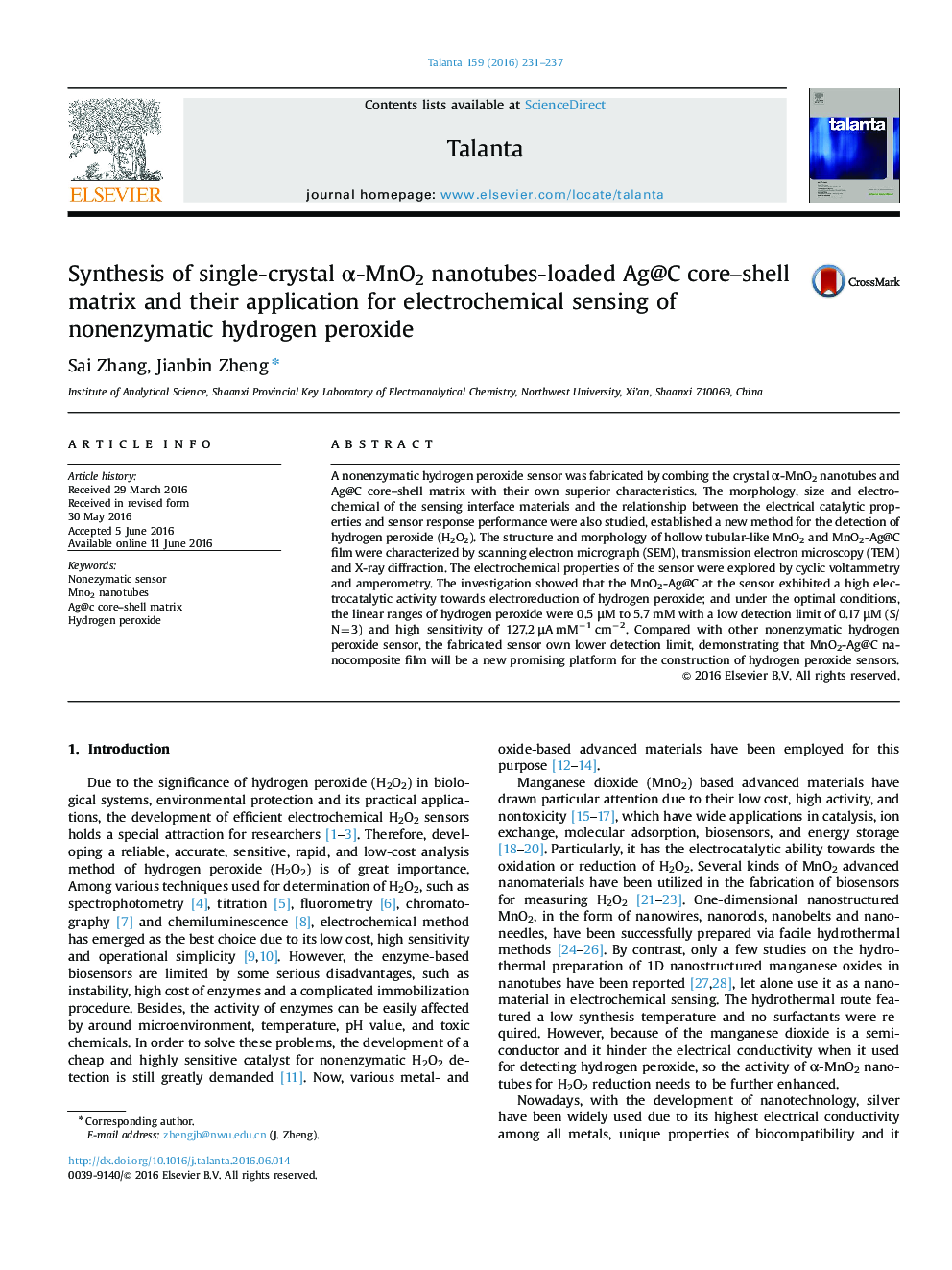| Article ID | Journal | Published Year | Pages | File Type |
|---|---|---|---|---|
| 1241770 | Talanta | 2016 | 7 Pages |
•The crystal MnO2 nanotubes loaded on Ag@C core–shell matrices and their nanocomposites were used for fabricating a non-enzymatic hydrogen peroxide sensor.•The experimental results reveal that the obtained Ag@C are globular and of uniform size, providing more binding sites for the adhesion of MnO2 nanotubes.•Besides, the electron transfer rate between the electrode and the electrolyte also greatly increased, thus further improve the MnO2 catalytic perfoamance towards H2O2.•As a result, the novel sensor exhibits good electrocatalytic activities toward H2O2.
A nonenzymatic hydrogen peroxide sensor was fabricated by combing the crystal α-MnO2 nanotubes and Ag@C core–shell matrix with their own superior characteristics. The morphology, size and electrochemical of the sensing interface materials and the relationship between the electrical catalytic properties and sensor response performance were also studied, established a new method for the detection of hydrogen peroxide (H2O2). The structure and morphology of hollow tubular-like MnO2 and MnO2-Ag@C film were characterized by scanning electron micrograph (SEM), transmission electron microscopy (TEM) and X-ray diffraction. The electrochemical properties of the sensor were explored by cyclic voltammetry and amperometry. The investigation showed that the MnO2-Ag@C at the sensor exhibited a high electrocatalytic activity towards electroreduction of hydrogen peroxide; and under the optimal conditions, the linear ranges of hydrogen peroxide were 0.5 μM to 5.7 mM with a low detection limit of 0.17 μM (S/N=3) and high sensitivity of 127.2 μA mM−1 cm−2. Compared with other nonenzymatic hydrogen peroxide sensor, the fabricated sensor own lower detection limit, demonstrating that MnO2-Ag@C nanocomposite film will be a new promising platform for the construction of hydrogen peroxide sensors.
Graphical abstractThe MnO2-Ag@C nanocomposites accelerate the electron transfer and successfully realized hydrogen peroxide catalytic reduction.Figure optionsDownload full-size imageDownload as PowerPoint slide
